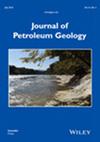A Conceptual Model of Hydrocarbon Migration Conduits in the Outer Carpathian Fold-and-Thrust Belt in Poland: An Interplay Among Fractures, Faults and Rock Properties
Abstract
The hydrocarbon migration conduits in the Outer Carpathian fold-and-thrust belt (OCFTB) are related to the dynamic development of the structural framework combined with changes of rock properties during the deformation process. Application of an integrated methodology, including fieldwork coupled with analysis of cores and thin sections as well as geophysical and petrophysical data from eight wells, made it possible to describe the relationships between the structural framework and the porous sandy rocks of the Cretaceous-to-Oligocene succession during the evolution of the OCFTB. The results indicate that the folding and thrusting, along with the associated rock fracturing during sustained horizontal contraction, resulted in the complex structure of the Silesian Nappe (part of the OCFTB). Structural deformation of lithified rocks created a system of conduits for hydrocarbon migration. The presence of bitumen in the thrust fault zones, normal faults and longitudinal joints (L), parallel to the anticline axes, transversal joints (T) and shear joints (D1 and D2) indicates permanent hydrocarbon migration through complex conduits formed by the subsequent structural deformation of the Silesian Nappe. The assembled evidence points to the existence of an interconnected system of a structural framework combined with porous carrier beds contributing to the formation of conduits for hydrocarbon migration during the progressive deformation of the OCFTB.

 求助内容:
求助内容: 应助结果提醒方式:
应助结果提醒方式:


